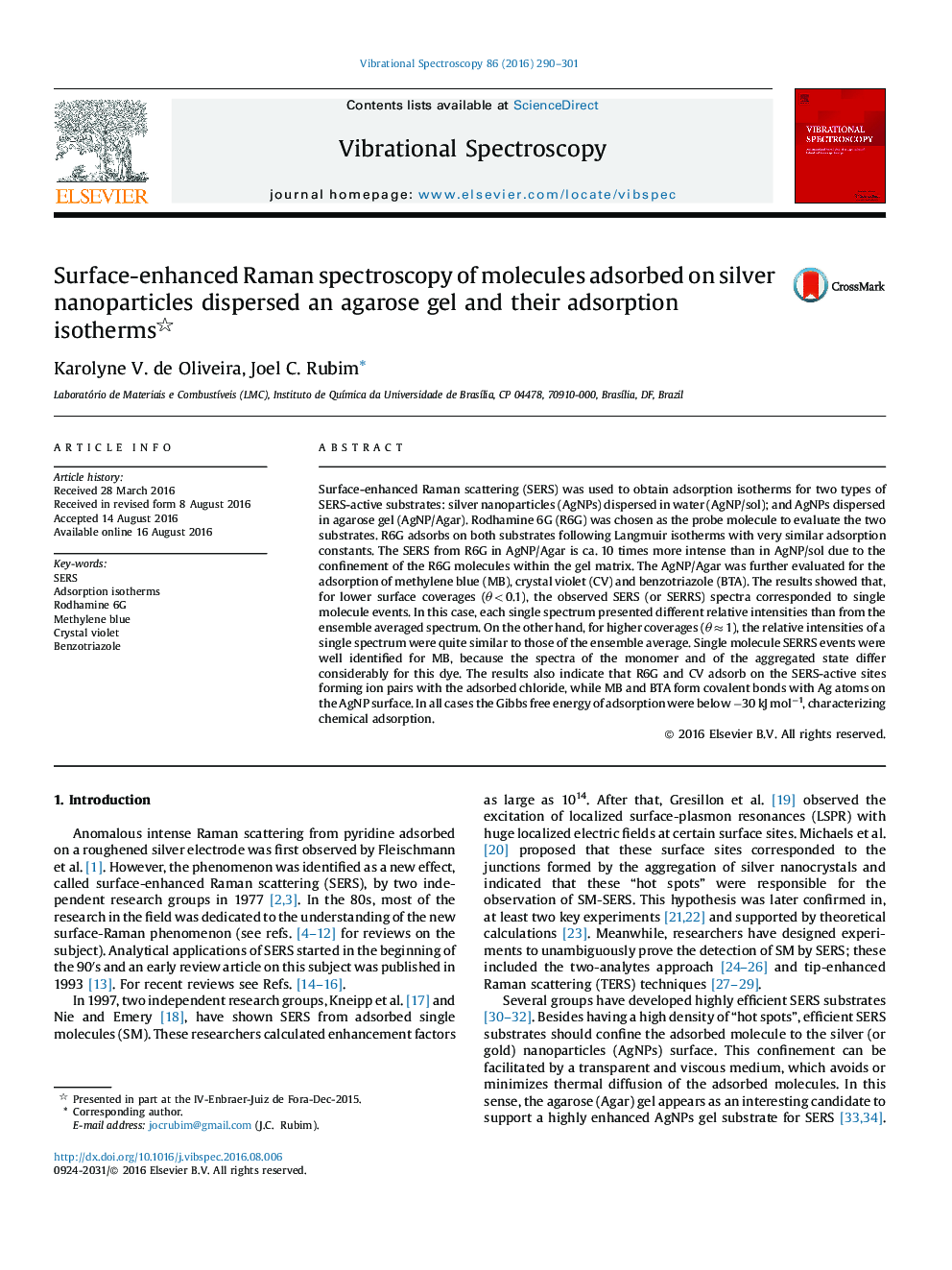| Article ID | Journal | Published Year | Pages | File Type |
|---|---|---|---|---|
| 1249531 | Vibrational Spectroscopy | 2016 | 12 Pages |
Surface-enhanced Raman scattering (SERS) was used to obtain adsorption isotherms for two types of SERS-active substrates: silver nanoparticles (AgNPs) dispersed in water (AgNP/sol); and AgNPs dispersed in agarose gel (AgNP/Agar). Rodhamine 6G (R6G) was chosen as the probe molecule to evaluate the two substrates. R6G adsorbs on both substrates following Langmuir isotherms with very similar adsorption constants. The SERS from R6G in AgNP/Agar is ca. 10 times more intense than in AgNP/sol due to the confinement of the R6G molecules within the gel matrix. The AgNP/Agar was further evaluated for the adsorption of methylene blue (MB), crystal violet (CV) and benzotriazole (BTA). The results showed that, for lower surface coverages (θ < 0.1), the observed SERS (or SERRS) spectra corresponded to single molecule events. In this case, each single spectrum presented different relative intensities than from the ensemble averaged spectrum. On the other hand, for higher coverages (θ ≈ 1), the relative intensities of a single spectrum were quite similar to those of the ensemble average. Single molecule SERRS events were well identified for MB, because the spectra of the monomer and of the aggregated state differ considerably for this dye. The results also indicate that R6G and CV adsorb on the SERS-active sites forming ion pairs with the adsorbed chloride, while MB and BTA form covalent bonds with Ag atoms on the AgNP surface. In all cases the Gibbs free energy of adsorption were below −30 kJ mol−1, characterizing chemical adsorption.
